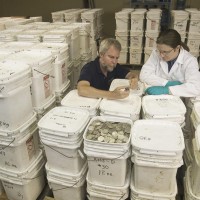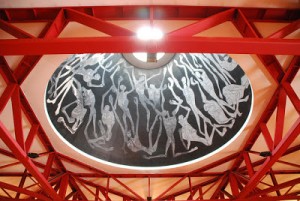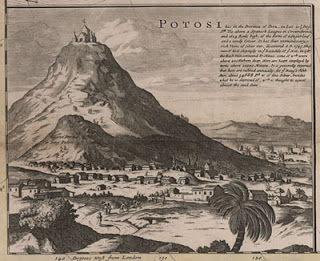 Many of you have been following the odyssey of Odyssey Marine for some time. It is high drama between a commercial salvage company and Spain that played out in US courts. Out of the controversy surrounding the wreck of the Nuestro Señora de las Mercedes (or, as it might be better known, ‘Black Swan’), Peru and Bolivia emerged as potential claimants for the contents of the wreck.Totally inadequate summary of the complex back story that I am sure that I don’t fully understand:
Many of you have been following the odyssey of Odyssey Marine for some time. It is high drama between a commercial salvage company and Spain that played out in US courts. Out of the controversy surrounding the wreck of the Nuestro Señora de las Mercedes (or, as it might be better known, ‘Black Swan’), Peru and Bolivia emerged as potential claimants for the contents of the wreck.Totally inadequate summary of the complex back story that I am sure that I don’t fully understand:
- Nuestra Señora de las Mercedes is sunk off the coast of Portugal during the 1804 Battle of Cape Santa Maria.
- In May 2007 it becomes clear that the commercial salvage company Odyssey Marine had located a major wreck when they the company flew 17 tons of mostly silver coins from Gibraltar to Florida. Subtle.
- Odyssey Marine would not disclose which wreck the coins came from, nor the type or date of the coins involved. This made everyone wonder what they were hiding. They called the operation The Black Swan Project. The results were around $500 million USD worth of gold and silver coins (guessing they mean price of metal).
- It eventually came out that the ship was the Nuestro Señora de las Mercedes; this is important because the ship was sailing under the flag of Spain and was not a private merchant ship.
- Spain claimed sovereign immunity over the contents of the wreck. Crazy stuff goes down such as ship seizures and stuff in disputed territorial waters.
- In 2009 a magistrate judge in Florida ruled that the treasure did come from a Spanish warship and ruled in favour of Spain’s claim of sovereign immunity. A district court judge validated the report. Said the judge: “The ineffable truth of this case is that the Mercedes is a naval vessel of Spain and that the wreck of this naval vessel, the vessel’s cargo, and any human remains are the natural and legal patrimony of Spain.”
- In 2011 the 11th circuit court of appeals upheld the findings of the lower court: the ship was a Spanish warship and the stuff should be sent to Spain. The key line from the ruling is “We do not hold the recovered [treasure] is ultimately Spanish property. Rather, we merely hold the sovereign immunity owed the shipwreck of the Mercedes also applies to any cargo the Mercedes was carrying when it sank.”
- The US Supreme Court has since declined to hear arguments for an emergency stay on the return of the coins. On Feb 24 of this year, the coins flew to Spain.
So going back to that last quote: the US court ruled that Spain clearly had sovereignty over the wreck and thus had sovereignty over the contents of the wreck. This does not mean the contents of the wreck are property of the Spanish government, rather that the lawful government of Spain is the proper authority for determining the ownership right of the contents of the wreck. With that in mind, Peru, Bolivia, and some descendants of the business folk who had invested in the shipment back in the day have come calling.
‘But blogger-type-person’, you might say, ‘that was a Spanish ship that went down off the coast of Portugal, what does that have to do with Peru or Bolivia…and isn’t Bolivia landlocked?’. To that, I push my glasses up my nose and say, well, in 1804 Bolivia (then called Upper Peru because Simón Bolívar was but 21 years old and was in France attending Napoleon’s coronation that year…fun fact!) was part of the Spanish Viceroyalty of La Plata, and it had not yet lost its coast to Chile. But that is beside the point. Bolivia is involved because, well, historic injustice.
The silver carried on Nuestro Señora de las Mercedes came from the fantastic silver lode of Potosí. It was mined by countless anonymous Indigenous people who were more or less forced into a system of corvee labour that was the result of a unique and complicated series of agreements that allowed for Indigenous social structures to stay partially in place in return for an annual supply of mine workers. Not all the miners at Potosí came as a result of the mita system, but life wasn’t great for anyone digging the mountain. It still isn’t. There are a lot of estimates for how many people died in the mines, but, taking into account things like silicosis and mercury poisoning let us just say the number is vast. At some point several tens of thousands of black slaves were brought in. The idea of Potosí is complicated and painful. The area is now a UNESCO World Heritage Site.
Here is a fuzzy question: when does cultural property become cultural property?
The silver on the ship, as I said, was undoubtedly mined by people Indigenous to the land that is now Bolivia. It was very likely minted in Bolivia, with Indigenous Bolivians (and black slaves at some point, who apparently were strapped to the mint mills in place of mules who tended to die from the exertion of twisting the machine) performing most of the work. Yet this activity was done under the aegis of the Spanish crown, was overseen by Spaniards, and the minted coins were property of Spain/Spanish people. Indeed the coins only exist for the expressed cultural purpose of being sent to Spain, that was their reason for being. There was nothing illegal about their movement until, maybe of course, they were removed from the seabed by Odyssey Marine (yet to be determined according to Spain). Seems like Spain has a good case for granting ownership of the coins to itself.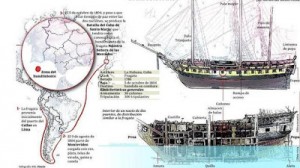
Last month Queen Sofía traveled to Bolivia to chill with President Evo Morales and take a tour of the lovely ruins of Tiwanaku (represent!) where she lit some candy on fire because that is just what is done. On 16 October, as part of that visit, Spain and Bolivia signed a Memorandum of Understanding stating that the two governments were going to work together towards the ‘reposición’ of some of the silver from the wreck. I avoided translating that word because I am not sure what English word to use in this case. Is this a ‘return’, a ‘restitution’, a ‘repatriation’? Is it, dare I say, a ‘reparation’? The objects are being cleaned and conserved and, once it is established which pieces were coined in Potosí (which, I’m going to say, is probably going to be most if not all of the silver), they are going to sort stuff out.
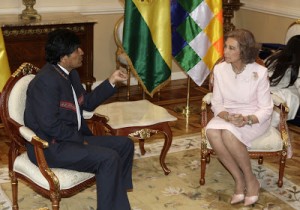 |
| Evo and Sofia. Note that Bolivia now has two flags: the Republican tri-color and the Indigenous wiphala to the right. |
Morales, as expected, discussed Indigenous exploitation during his speech following the signing of the agreement. Minister of Culture Pablo Groux stated that this was a way to give Potosí ‘a little recompense’ for everything that was taken out of the mountain. Which, by the way, made up the majority of the silver in circulation in the world at the time.
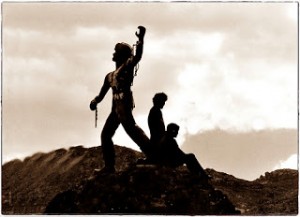 |
| Miner monument at Potosí |
Me speaking intellectually, if we are going to accept the idea of a World Heritage, the return of the silver objects to the World Heritage Site of Potosí seems like a great idea. The story of the wreck against the backdrop of the mountain and the stories of the miners is a stellar contextualised heritage experience. I’d go see that…heck I will go see that. Maybe that is what is going on here to a certain degree, but one can’t help but wonder how much this is a gesture of good will over a past injustice that the current Bolivian administration is passionate about. Spain, of course, has the sovereign right to determine the owner of the wreck’s contents by whatever rubric they think fits.
Much of Bolivia’s political rhetoric at the moment is focused on the transformational moment of the Conquest and the centuries of Indigenous hardship that followed. The idea of colonial period suffering is enshrined in the preamble of the 2009 Constitution and, historically and even currently, the struggles of the miners are the archetype of the struggles of all Indigenous people (kinda, perhaps communal land holding is more symbolic). It is pretty interesting to see this ‘reposición’ go down because it is certainly meaningful.
So yeah, this is really just your standard ‘Who owns the past’ sort of post, but it is a unique situation: Spain, as sovereign over the wreck potentially granting an insane amount of silver to Bolivia? Interesante.
